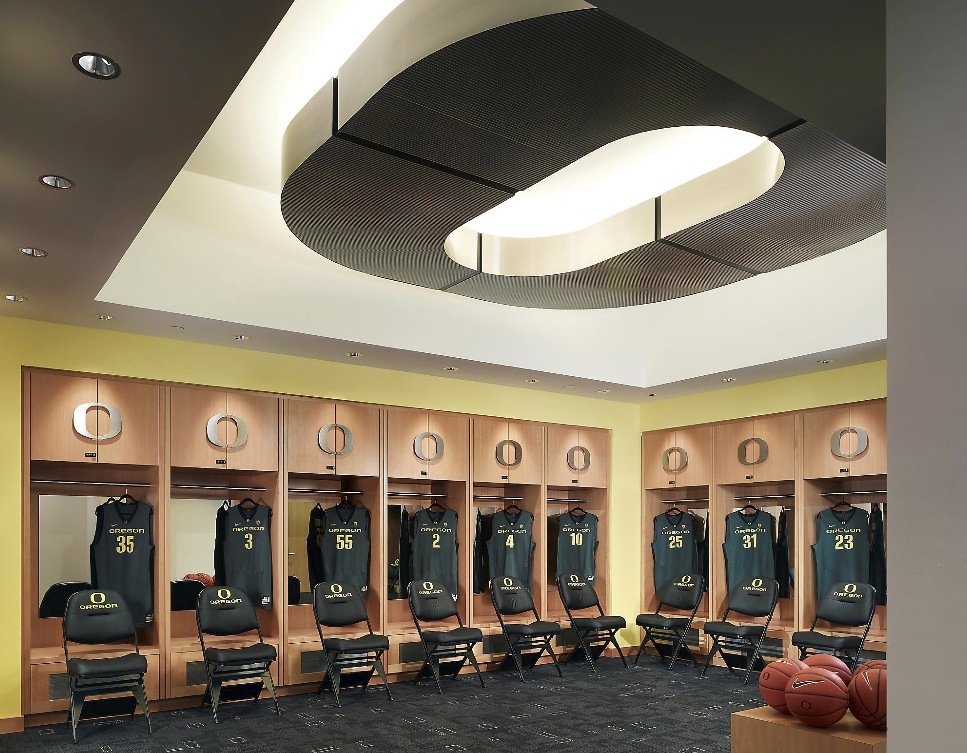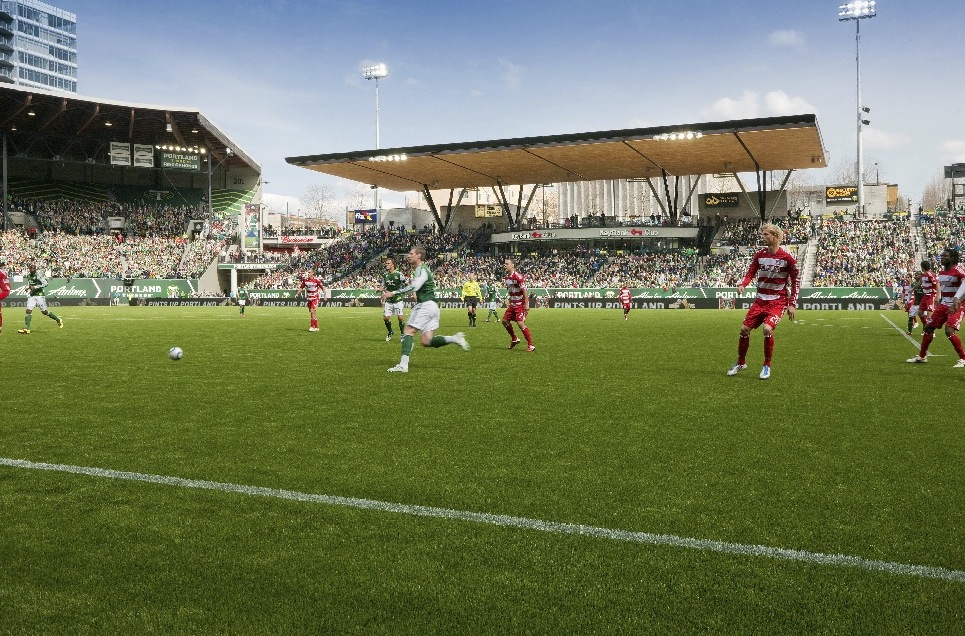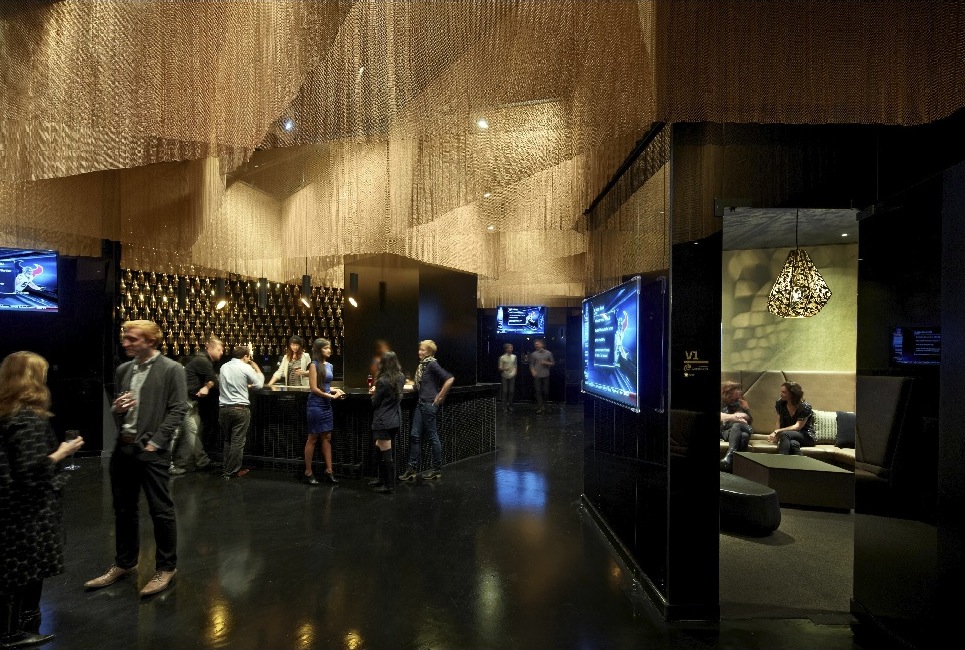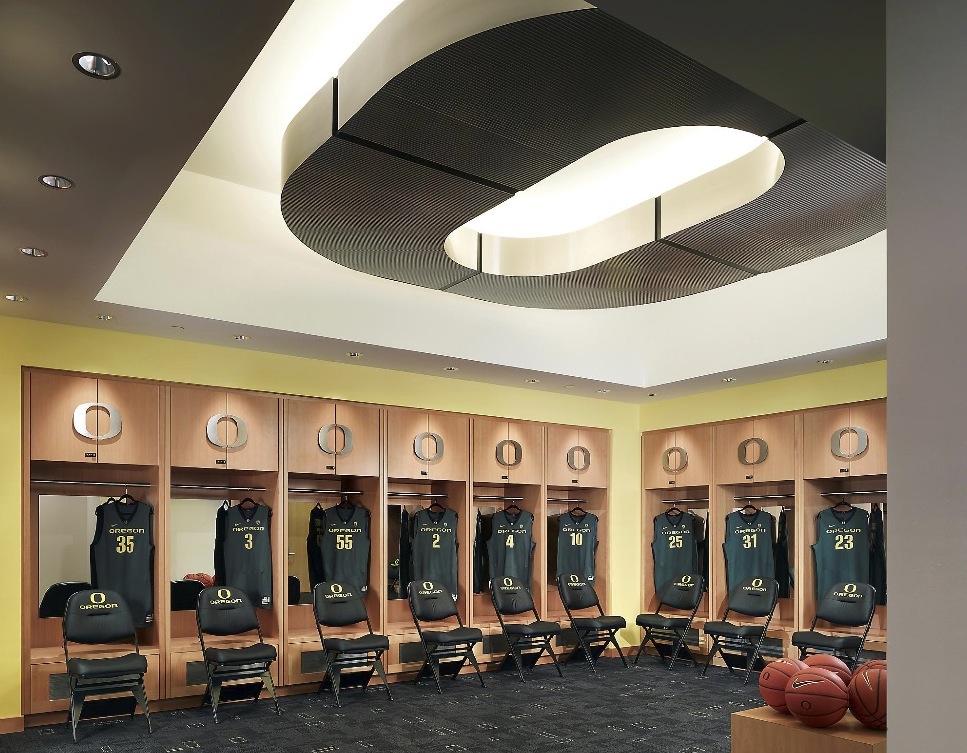When sports teams travel to a game, they battle fatigue, strange surroundings, and thousands of hostile, roaring fans. The home team meanwhile, rested, confident in their city and familiar with the facility, rides the fan energy that rocks their building when they step onto the field or court.
Home advantage can play a significant role in game outcomes. Players talk about it, coaches plan for it, Vegas odds makers calculate it. Team owners even ask architects to maximize it.
Here are six ways AEC firms can help create the conditions that draw big crowds, energize the home team to perform better, and disrupt visiting players:
1. Bring the fans in close
The closer the fans are, the more the players hear the noise, see the enthusiasm, and feel the energy. Venues can be designed to place stands as close to the court or field as possible, and steep-pitched seating bowls can bring the back rows closer to the action. The result: home teams feel the energy of the crowd as an extra player, while visiting teams must battle the added aural and visual distraction.
At JELD-WEN Field, seating extends to within fifteen feet of the pitch, and many fans stand and cheer virtually the entire game. After the Timbers’ home opener victory, head coach John Spencer said, “I don’t think you’ve seen an atmosphere like that in American soccer history. Ever. I think it was tremendous.”
2. Make it loud
Acoustic design maximizes the crowd’s ability to drown the opposing team in roaring noise, disrupt their communication and intimidate them. CenturyLink Field, home of the NFL Seattle Seahawks, has been dubbed the “loudest stadium in the NFL” thanks to a design that focuses crowd noise onto the field.
Foot stomping on the steel stands has been recorded by seismographs at comparable levels to a mini-earthquake. Over a 10-year period, there were 143 false-start penalties on visiting teams in Seattle, the most of any open-air stadium. During the home opener against the San Francisco 49ers on September 15, 2013, CenturyLink will be the site of an attempt sponsored by a fan group to break the Guinness World Record for loudest stadium crowd.
3. Make it easy to get there
How easily fans can travel to a venue is a big factor in filling the seats. Placing the venue in a centralized location well served by mass transit makes it more accessible. Brooklyn’s new sports and entertainment destination, Barclays Center, is one of the few urban venues in the U.S. with no dedicated parking. Instead, the arena can be reached by 11 subway lines, the Long Island Rail Road, and 11 bus lines. In their first season at Barclays Center, the Brooklyn Nets traded years at the isolated, and largely empty, Meadowlands Arena (and a two-year stint in Newark) for a packed house in a hot spot—and their first winning season in seven years.
In downtown Portland, Oregon, JELD-WEN Field, home of the MLS Portland Timbers, also has no dedicated parking, but receives extra service from the local metro system on game days. To sweeten the deal, season tickets—which have sold out every year since the renovated stadium opened and have a waiting list of thousands—include a transit pass.
4. Make it the place to be
More people in the building means more energy. Barclays Center demonstrates the difference between a typical sporting venue and an urban focal point where sports are the anchoring attraction. Home to the NBA Brooklyn Nets and soon the NHL New York Islanders, Barclays Center was designed to include amenities that broaden the appeal — four bar-lounges, three clubs, and the 40/40 CLUB & Restaurant by American Express make the venue a hotspot for nightlife and keep the place buzzing with celebrities and fans. In the Nets’ first season in the new facility, ticket sales increased 23 percent over the previous year, jumping from dead last over half of the teams in the league.
5. Make the home team feel at home
The quality of team amenities like locker rooms and training facilities makes a big difference in a team’s morale and self-image, which players carry into the field and into every play. Ultra-modern technology, high-end design finishes, and institutional identity imagery all contribute to athletes’ sense of belonging—in a facility, in a tradition, and in contention for their league’s highest honors. When the University of Oregon created the Matthew Knight Arena to replace a legendary basketball temple, it was critical that the facility modernize to the utmost while embodying the legacy of the previous building and the Ducks.
6. Get people excited
Venues that combine iconic architecture, local flavor and active public spaces give fans a stronger sense of connection and excitement. The dramatic post-Hurricane Katrina restoration of the Louisiana (now Mercedes-Benz) Superdome in New Orleans forever connected city and venue, building a reputation as one of the toughest away-game locations in the NFL. In 2010 the owners went a step further, adding Champions Square, a new public space conceived as the venue’s “front porch.” Designed in the tradition of New Orleans’ famous public squares, Champion Square hosts concerts prior to games, with the street festival atmosphere brewing excitement until fans fill the stadium and create what has been called the best home field advantage in the NFL.
Related Stories
Student Housing | Feb 19, 2024
UC Law San Francisco’s newest building provides student housing at below-market rental rates
Located in San Francisco’s Tenderloin and Civic Center neighborhoods, UC Law SF’s newest building helps address the city’s housing crisis by providing student housing at below-market rental rates. The $282 million, 365,000-sf facility at 198 McAllister Street enables students to live on campus while also helping to regenerate the neighborhood.
MFPRO+ News | Feb 15, 2024
UL Solutions launches indoor environmental quality verification designation for building construction projects
UL Solutions recently launched UL Verified Healthy Building Mark for New Construction, an indoor environmental quality verification designation for building construction projects.
MFPRO+ News | Feb 15, 2024
Nine states pledge to transition to heat pumps for residential HVAC and water heating
Nine states have signed a joint agreement to accelerate the transition to residential building electrification by significantly expanding heat pump sales to meet heating, cooling, and water heating demand. The Memorandum of Understanding was signed by directors of environmental agencies from California, Colorado, Maine, Maryland, Massachusetts, New Jersey, New York, Oregon, and Rhode Island.
MFPRO+ News | Feb 15, 2024
Oregon, California, Maine among states enacting policies to spur construction of missing middle housing
Although the number of new apartment building units recently reached the highest point in nearly 50 years, construction of duplexes, triplexes, and other buildings of from two to nine units made up just 1% of new housing units built in 2022. A few states have recently enacted new laws to spur more construction of these missing middle housing options.
Green | Feb 15, 2024
FEMA issues guidance on funding for net zero buildings
The Federal Emergency Management Agency (FEMA) recently unveiled new guidance on additional assistance funding for net zero buildings. The funding is available for implementing net-zero energy projects with a tie to disaster recovery or mitigation.
Hospital Design Trends | Feb 14, 2024
Plans for a massive research hospital in Dallas anticipates need for child healthcare
Children’s Health and the UT Southwestern Medical Center have unveiled their plans for a new $5 billion pediatric health campus and research hospital on more than 33 acres within Dallas’ Southwestern Medical District.
Architects | Feb 13, 2024
Pierluca Maffey joins Carrier Johnson + Culture as new Firmwide Head of Design
Carrier Johnson + Culture (CJ+C) has hired Pierluca “Luca” Maffey, International Assoc. AIA, as the firm's new Firmwide Head of Design and Design Principal.
K-12 Schools | Feb 13, 2024
K-12 school design trends for 2024: health, wellness, net zero energy
K-12 school sector experts are seeing “healthiness” for schools expand beyond air quality or the ease of cleaning interior surfaces. In this post-Covid era, “healthy” and “wellness” are intersecting expectations that, for many school districts, encompass the physical and mental wellbeing of students and teachers, greater access to outdoor spaces for play and learning, and the school’s connection to its community as a hub and resource.
Office Buildings | Feb 13, 2024
Creating thoughtful tech workplace design
It’s important for office design to be inspiring, but there are some practical principles that can be incorporated into the design of real-world tech workplaces to ensure they convey an exciting, sophisticated allure that accommodates progressive thinking and inventiveness.
Airports | Feb 13, 2024
New airport terminal by KPF aims to slash curb-to-gate walking time for passengers
The new Terminal A at Zayed International Airport in the United Arab Emirates features an efficient X-shape design with an average curb-to-gate walking time of just 12 minutes. The airport terminal was designed by Kohn Pedersen Fox (KPF), with Arup and Naco as engineering leads.























